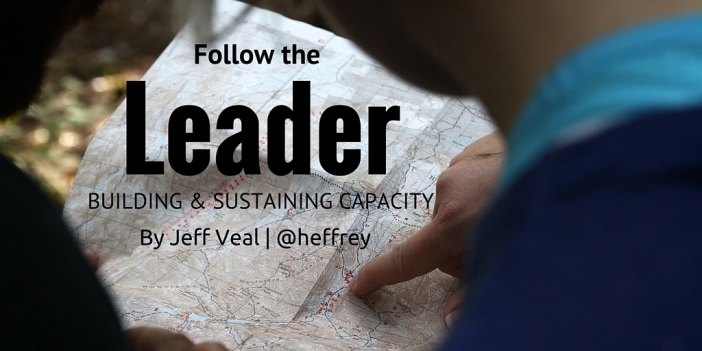
Remember as a kid playing the game, “Follow The Leader.” It’s pretty simple – first a leader or “head of the line” is chosen, then the children all line up behind the leader. The leader then moves around and all the children have to mimic the leader’s actions. Any players who fail to follow or do what the leader does are out of the game. As a leader, what message are you sending to people about how you want them to follow. Don’t fool yourself if you think that your students, staff, and parents are not watching your every move. You can either have them move with you or against you. It is your choice! Our ultimate goal is to build and sustain capacity in people that should long outlive us in that position. Here are some points to consider as we lead people…
“Serve” – as leaders we get this glorious opportunity to serve our students, staff, and families. Serving can be misconstrued to mean “door mat.” Serving doesn’t mean you get on your face and grovel before someone…it simply means you work for their best. Consider how you can work for the best of those in your care. It can be the simple act of covering a duty or those moments when you emotionally show up to ask, “how are you today”” and really mean it. The role of leadership means sensing what your people need and being ready to respond on their terms, not yours.
Get Out of the Way – We have to put people over our own agenda. In our best of intentions we can in fact become the biggest inhibitors to growth. How does this happen? When you operate within a hierarcial system the pipeline of decision making often forces everything through the leader at the top. What if we flattened leadership? Truly our job as leaders is to help other leaders get where they want to be with their ideas, hopes, and dreams for how to helps kids be truly successful.
Give permission – to self and others to seek even if the answers don’t seemingly materialize right away. You have individuals and teams of people surrounding you just waiting for you to say, “yes.” Be known as a gracious permission giver and create conditions that support other’s actually learning. It could begin by canceling your school faculty meetings, encouraging personalized learning opportunities, and giving time back into the hands of our staff. When students and teachers are given “space” or time they are free to engage, explore, and experiment.
Go explore – As the edleader for a campus model the way by seeking out your adventure and discover personal new opportunities that create pathways of learning, innovation, and ingenuity. As you learn, bring those opportunities back to your people that will elevate the journey for your team. Be curious with your people. Our people need to see us as the most curious learner in the building. Basically, get out of your office, even off your campus, and learn!
Ask the “right” questions – along the way ask the questions that no one currently is willing to ask. Model risk taking and a growth mindset in your meetings with staff, coffee with parents, and sit downs with students. Use intentional questions that will generate constructive thinking and problem solving. Ask the questions that you know might result in some painful but needed truth for you. It is only in getting honest feedback that you can make the changes that will grow your campus forward. Don’t forget we are in this for kids.
Celebrate the “small” moments– be intentional about celebrating the process, the journey that your students, teachers, or other edleaders have been on. When we celebrate we are validating the process. 99% of the time authentically celebrating someone doesn’t take any money just some time and relational energy. You can’t imagine what a quick fly by note (less than 2 minutes to write) can mean for a teacher or student. You want to put energy back into people, notice them and they will notice others.
Finally, if we want to sustain a healthy culture where our stakeholders want to follow the leader we must also believe the best about people. We must maintain an attitude that is gracious, generous, and supportive because if we don’t then who will!





 If we are self-directed learners, we thrive and crave on feedback. Let’s say we’ve bought into authentic, learner centered instruction. The data we collect from an assessment can help to inform next steps for students in the learning process but it doesn’t exclusively guide student learning.
If we are self-directed learners, we thrive and crave on feedback. Let’s say we’ve bought into authentic, learner centered instruction. The data we collect from an assessment can help to inform next steps for students in the learning process but it doesn’t exclusively guide student learning.


